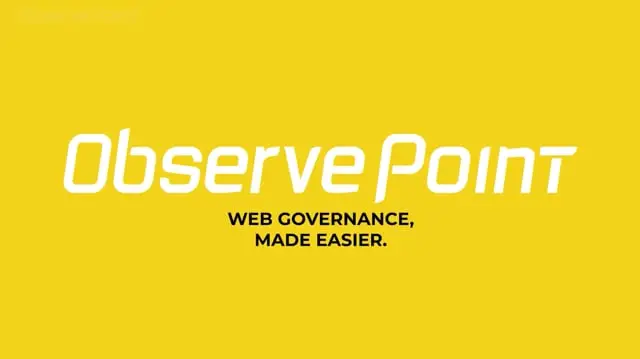
A TMS is a crucial part of your tag management strategy, yet when making the move to implement a TMS, far too many companies make mistakes right out of the gate because they fail to plan for a successful implementation.
Regardless of which TMS solution you have decided to use, there are five best practices that can help digital marketers, IT leaders and web analysts best configure their web tagging strategy and plan as they implement and deploy a TMS.
1. Understand and accept the risks of your TMS implementation
There are inherent risks associated with any TMS implementation, no matter which solutions you adopt.
During the new implementation process, your team will be learning the nuances of the tag management system and how its capabilities meet your business goals.
A successful TMS implementation will require time, money and expertise—expect and accept this before you begin.
Also be aware that the use of a tag management platform does allow the risk of your organization’s employees making mistakes that impact your site’s front-end experience via a “single point of failure” for marketing applications.
Training and leadership are crucial in avoiding such mistakes (see best practice no.4).
Also remember that ongoing maintenance, auditing and overall governance of your analytics implementation are crucial to avoid these mistakes as you adjust and change your implementation over time (see best practice no. 7).
Other inherent risks present during your TMS implementation include impacts to your historical uptime and downtime trends, product release processes, disaster recovery plans and overall business strategy.
Work with your vendor to plan for these risks and take measures to avoid them.
2. Match the capabilities of your TMS to your business goals
Different tag management tools are designed to fulfill different tag management objectives. Do your research ahead of time to make sure the TMS tools you select will address all areas of your business goals and tagging strategy so you can find the right balance between multi-channel data integration vs. pure play tag set-up.
3. Implement tag governance and begin documentation
Tag governance is a subdiscipline within data governance focusing specifically on the data collected via tag and transmitted via network request. Good governance can go a long way to ensuring your tag management efforts don’t fall to the ground.
Failing to address the governance question early on when building a tag management strategy is one of the number one places I’ve seen companies struggle.
Invest the time up front, prior to your TMS implementation to evaluate, determine and document these three core elements of a tag governance plan:
- Resources: Who are the tag governance stakeholders, and do they all buy into your plan? Start here.
- Workflow: How will the TMS workflow be managed? You need to have defined processes for:
- Request tracking
- Responses to requests
- Testing
- Quality assurance
- Infrastructure: Does your coding documentation exist in what Adobe DTM expert Rudi Shumpert describes as a “fluid, collaborative and accessible location”?
Nailing your tag governance strategy is a crucial part of having a solid tag management plan in place before you pull the trigger on a TMS implementation. A key part of tag governance is your tagging plan, which is a document that outlines the architecture of your implementation. This document is a key element to ensuring a successful TMS deployment.
4. Invest in the right skill sets and leadership
You must ensure that the digital analysts, architects, developers and/or marketers who “own” the TMS process have the right skill sets to implement, deploy and maintain the tag management plan.
Leadership on these teams is also extremely important, and when consulting with organizations around their website tagging strategy, I always advocate the promotion of a Data Quality champion to run point on all things analytics, data quality and tag management.
5. Start with a tag audit
There are huge difficulties that analytics teams experience with tag management and tagging implementations. And the bottom-line impact of less-than-perfect analytics is a reality that plagues most companies.
Websites can suffer from:
- Conflicting tag technologies
- Duplicate web tags
- Unauthorized third-party technologies collecting data
- Outdated tags that were supposed to be removed
- Multiple teams adding multiple tags
- Poor attribution
- Broken tags
- And more
Before implementing your TMS, you want to understand what technologies are present on your site and how they are functioning.
This best practice calls for a complete website audit to identify all installed tag technologies (including those that are deprecated or should not be included in the TMS), and areas of the website that are interfering with tag functionality.
Once you know what technologies are present on your site and how they are functioning, you are ready to plan your TMS implementation accordingly.
6. Focus on quick TMS wins
Like any new process and system, the ability to show value in your investment is critical to the initiative’s overall success. As you plan how to measure your new tag management efforts, start with the low-hanging fruit.
Focus on the immediate and tangible benefits of a TMS approach—namely time and costs savings to IT that are generated through this more efficient tag maintenance.
You can also allocate effort to showing metrics like improved page load performance and marketing measurement, but only do so if you are willing, ready and dedicated to actively invest in the ongoing maintenance and management of your implementation.
Which brings us to the final best practice in building your tag management plan and website tagging strategy.
7. Conduct ongoing maintenance and tag governance
Your work cannot simply stop at the point that you implement a tag management solution. One of the most common mistakes analysts make is in assuming that once TMS tools are in place there is no need to continually perform website QA and governance processes.
By performing regular tag audits across your digital properties and channels you ensure that your TMS implementation continues to be correct and complete.
Even with a TMS in place, web analytics tags are bound to break, and often do. Failing to keep a continual pulse on the performance of your tag management plan opens up the possibility of blind-spots in your data collection strategies.
Best practice is to plan for regular, ongoing audits.
The Next Step
The next step in developing your website tagging strategy depends on where you are now. It’s possible that you have very little documentation on your current website tagging structure and need some insight. At this point, you’ll want to reverse engineer tag documentation using a website audit.
You can garner some quick insight into how your martech stack is performing by running a free website audit on your site here.




